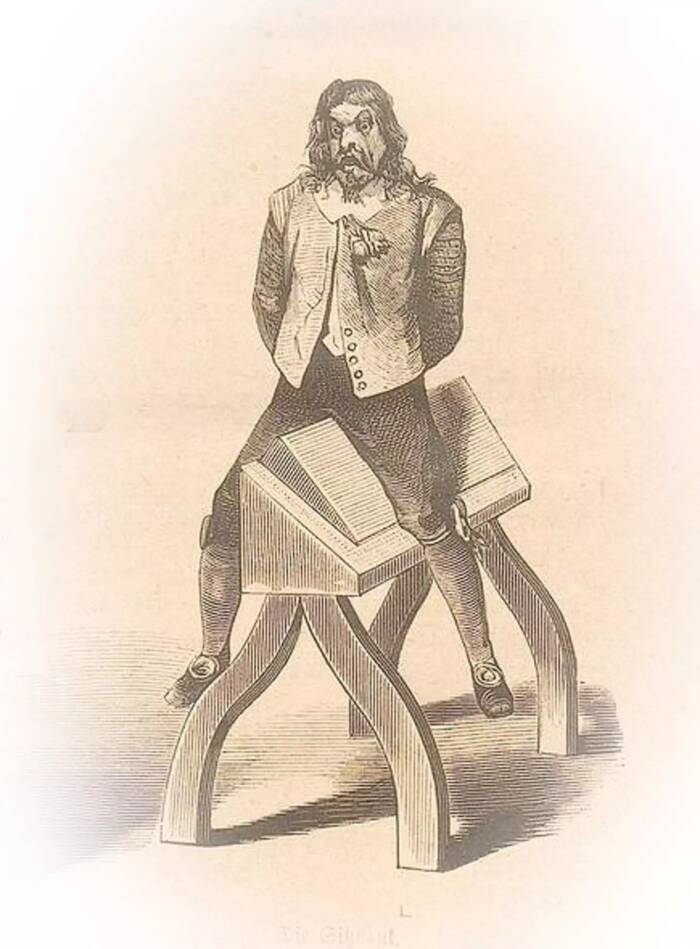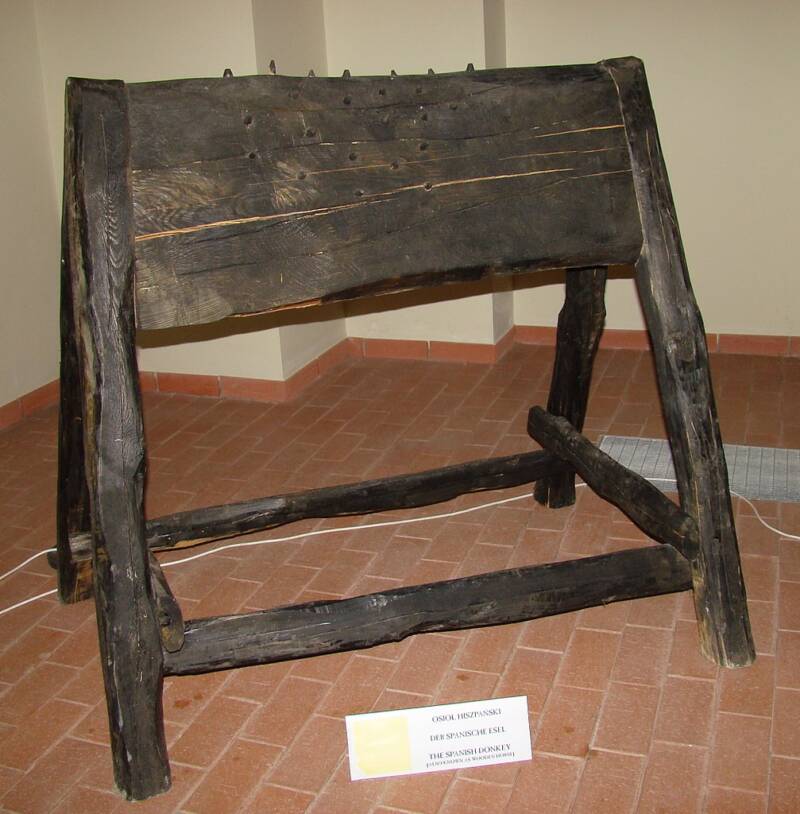Medieval Torture Devices: The Spanish Donkey

Public DomainA depiction of the Spanish Donkey, one of the most agonizing medieval torture devices.
The Spanish Donkey, also called the “chevalet” or simply the “wooden horse,” was one of the cruelest of the medieval torture devices.
Thought to have emerged during the Holy Inquisition in 12th-century France, the Spanish Donkey was made out of wood and shaped like a triangular prism on stilts, with the triangle’s point facing upward. The victim was made to sit atop the triangle, causing severe discomfort to their genital area.
Sometimes, their torturer would add weights to their ankles to slowly weigh them down. Other times, the torturer would tickle their feet or hold a flame to their feet to cause them to squirm, which also increased the agony. Perhaps most horrifying, spikes could be added to the triangle’s point, increasing the likelihood of severe injuries to the genitalia.

Wikimedia CommonsA version of the Spanish Donkey with spikes.
If someone were lucky, the Spanish Donkey might simply cause intense discomfort. If they weren’t, it could cause agonizing pain, disfigurement, and even death. And it was used long after the Middle Ages ended.
In 17th-century Canada, it was used as a punishment for anything from blasphemy to gluttony. In one horrifying case, a man punished for being a glutton “ruptured” after he was placed atop the Spanish Donkey.
The torture device was even used during the American Revolutionary War and the Civil War in the United States. In 1775, George Washington condoned the use of the Spanish Donkey against a man for “threatening and abusing a number of persons, when prisoner in the Quarter Guard,” though the man only had to sit atop the torture device for 15 minutes. In the 1860s, it was also used by Union troops against Confederate prisoners of war.
Cruel, painful, and humiliating, the Spanish Donkey was an effective torture device during the Middle Ages. But there were many more.





